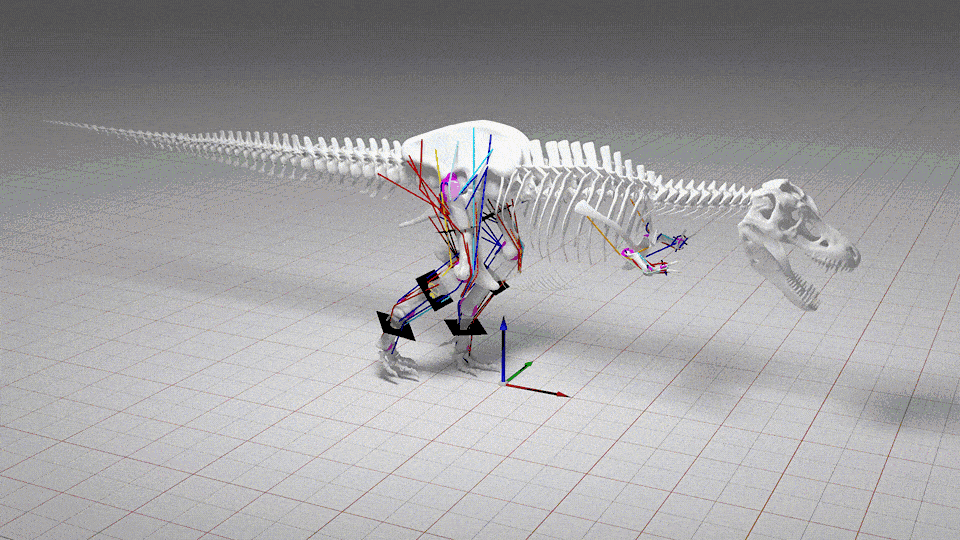When you buy through links on our site , we may earn an affiliate commission . Here ’s how it works .
During the Jurassic period , some feathered dinosaurs — including the 160 - million - year - quondam , bragging - sizeAnchiornis huxleyi — were downright fluffy , unlike many of their sleek , modern bird congeneric , a new cogitation finds .
The finding show that the plumage ofAnchiornis , and another feathered dinosaur known asSinosauropteryx , were simpler — and fluffier — than antecedently thought . Moreover , the dinosaur fossils in the study indicate that modern wing and feather in all probability developed later along the evolutionary timeline than researchers had assumed .

The crow-sizeAnchiornis huxleyiwas downright fluffy, scientists have found.
" Overall , it does hint that unfeignedly modern feathering and wings could have evolved subsequently in time or in extinct bird lineages more closely come to to innovative birds than we might have bear , " Evan Saitta , a fossilist at the University of Bristol in the United Kingdom , who conducted the research , say Live Science . [ Images : These Downy Dinosaurs Sported plumage ]
To investigate , Saitta and his colleague examined the fossils of complete dinosaur , as well as dinosaur feathers that had fallen off and fossilize . During their depth psychology , the researcher paid close care to each feather ’s anatomy , including the rachis ( the severe stem ) and the barbicels — the hooked fibril that lock up the single fibre , called barbs , of a feathering together .
The researchers observe that the knocked out , contour feather found on thetorso and limbsofAnchiornishad little stem and no barbicels . This means that the feathers branched out like plumes , give the dinosaur a soft , fluffy appearance . These prehistoric , downlike feathers are similar to those of a squab , which also has open and spaced barb .

An artistic rendering of theAnchiornis.
In contrast , most New chick feathering have a long base and a internet of barbicels that hold feathers together in a sleek , flowing way that helps boil down drag during flight of stairs , the researchers said .
Meanwhile , contour feathers of theSinosauropteryxlacked rachises altogether . Instead , these dinosaurs had feathery tufts come forth from their bodies . These findings still have to be affirm , though , because fossils of outdoor stage - aloneSinosauropteryxfeathers have yet to be discovered . Rather , the researchers made assumptions ground on the imprint surrounding a fossil of the dinosaur .
Anchiormiscan also be distinguished from modern birds because it had multiple run-in of long , sagging feathers on its four wing and keister , suggesting that it engaged in " annex - assisted bounce , " or sailplaning , rather than true flight , the researchers read . In direct contrast , most modernistic raspberry have aerodynamic , asymmetrical feather in just one single row on their two annex , they tell .

A fossil of individualAnchiornisfeathers next to a fossil of feathers resembling those of modern birds.
Until this research , scientists had never observed plume with a unretentive rachis and long , divide barbs that branch out symmetrically as they do inAnchiornis , according to the study .
" The composition avail to fill in a gap with regards to the forms primitive feathers pack , " Saitta said .
In addition , the findings suggest that the fluffy , down - like feathers ofAnchiornismade the dinosaur an ineffective flyer , but , like a winter coating , the feathers likely help it keep ardent .

Saitta and his colleague plan to keep searching for more feathered dinosaur , which might offer evidence that will aid them read how naive wings and feather fit into the evolutionary timeline that eventually grant rise to birds .
" Working out these relationships will help oneself determine the timing and normal of feather evolution , " he said . " I can not give you any precise geologic dates for these , though . There are a tidy sum more fogey to be recover . "
The study was release online today ( Nov. 28 ) in the journal Palaeontology .

Original clause onLive Science .













